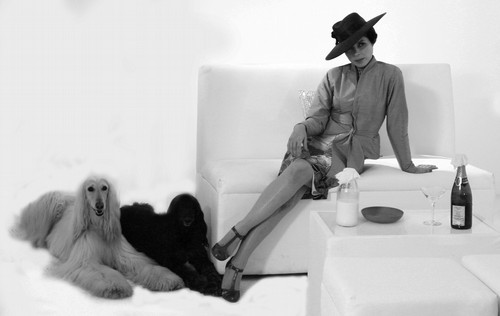« Starz Denver Film Festival 2010 - Come Undone | Main | Starz Denver Film Festival 2010 - Poetry »
November 06, 2010
Starz Denver Film Festival 2010 - The Black Panther

La Pantera Negra
Iyari Wertta - 2009
Centro de Capacitacion Cinematografica 35mm film
Watching The Black Panther made me think about a quote by Martin Scorsese about Mario Bava, essentially that there is no story but lots of atmosphere. The Black Panther is that kind of film, that begins with a story, but goes off in various crazy tangents, until at the end of the film. The premise for the story, the search by cut-rate gumshoe Nico Beamonte for something or someone call The Black Panther turns out to be what Hitchcock called a MacGuffin of the first order. As soon as The Black Panther is revealed, it's virtually ignored or forgotten by everyone. Iyari Wertta's debut feature might be understood better as a dream about movies. There is a wisp of a story, but what is remembered are series of sensational images.
The images primarily recall Mexican films from the Fifties and Sixties. Possibly specific films are recalled, but my knowledge of Mexican films is admittedly slight. Still, I did some "homework" by seeing one film starring Pedro Infante. In The Black Panther, it turns out that Infante has not died in an airplane crash, but has been cryogenically preserved. Unfrozen, Infante stumbles out of the lab, but soon enough is found singing in some small cantina, again charming the ladies with his songs celebrating his sexual conquests.
Nico Beamonte discovers the newly revived Infante by following the daughter of a mysterious character, The Gringo. The gringo's blonde daughter is the lover of a sultry brunette whose body is now possessed by the spirit of a creature from outer space. Pedro Infante is such a charmer that lesbians can't resist him either. The three go off to a graveyard where the gates open by themselves. The three walk into Infante's tomb, and down candle lit stairs where music is pounding. We never see where those stairs lead to, so it could be a disco, or hell, or both. And that creature from outer space that Beamonte shoots dead? The monster is slimy, ugly, and has multiple eyes, exactly what might be expected from the dubbed Mexican creature features that found their way north of the border courtesy of K. Gordon Murray. About the only thing not found in Wertta's genre mash-up is El Santo, the masked wrestler.
Forget the story, though. The film should be viewed on the most visceral level, as a series of beautifully composed black and white images. The chicly dressed woman with the two dogs, one black, one white, driving around in the imposing black car. The empty streets at night, the shot of the hands of two children with fingers entwined, the women dressed in form fitting black outfits make up some of the images that are remembered. Wertta also uses some of the visual style of his predecessors, framing the actors with close ups to disguise the minimum sets. Wertta may have summed up this film best by stating "my film is about imagination and beautiful and crazy things."
Posted by Peter Nellhaus at November 6, 2010 01:58 PM
